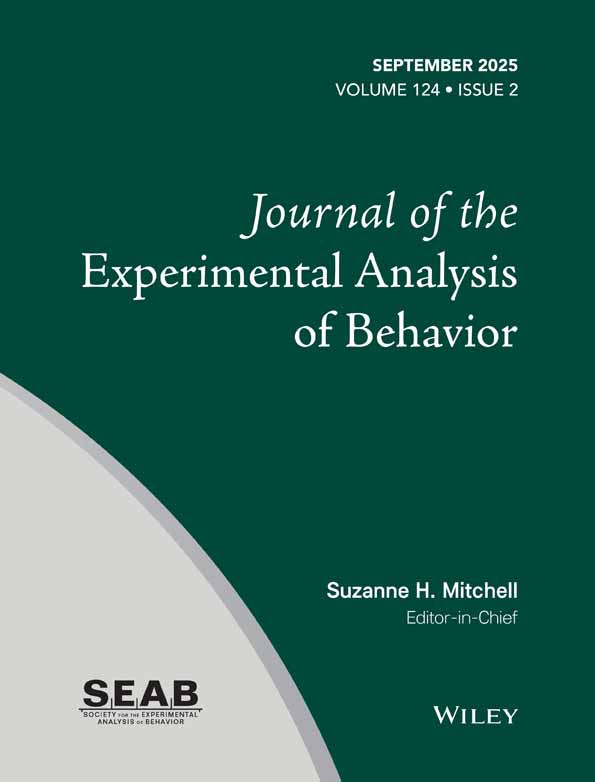APPLICATION OF BOWER'S ONE-ELEMENT MODEL TO PAIRED-ASSOCIATE LEARNING BY PIGEONS
Abstract
Bower's (1961) all-or-none model of human paired-associate learning was applied to individual data supplied by three pigeons. When the center one of three keys was illuminated with red light or with three white dots in a vertical array on a black ground, pecking on the left key was reinforced. When the center key was lighted green or with a horizontal array of three white dots on a black ground, pecking on the right key was reinforced. The left and right keys were illuminated with white light. The task was considered to be analogous to learning a paired-associate list of four pairs involving four stimulus items and two response items. The model was evaluated by comparing the following model predictions with values obtained from each animal: trials-to-criterion, standard deviation of trials-to-criterion, standard deviation of errors-to-criterion, mean error runs, mean error runs of lengths one to four, and autocorrelations of errors of lags one to three. Most of the predictions based upon the model were in close agreement with the obtained data.




